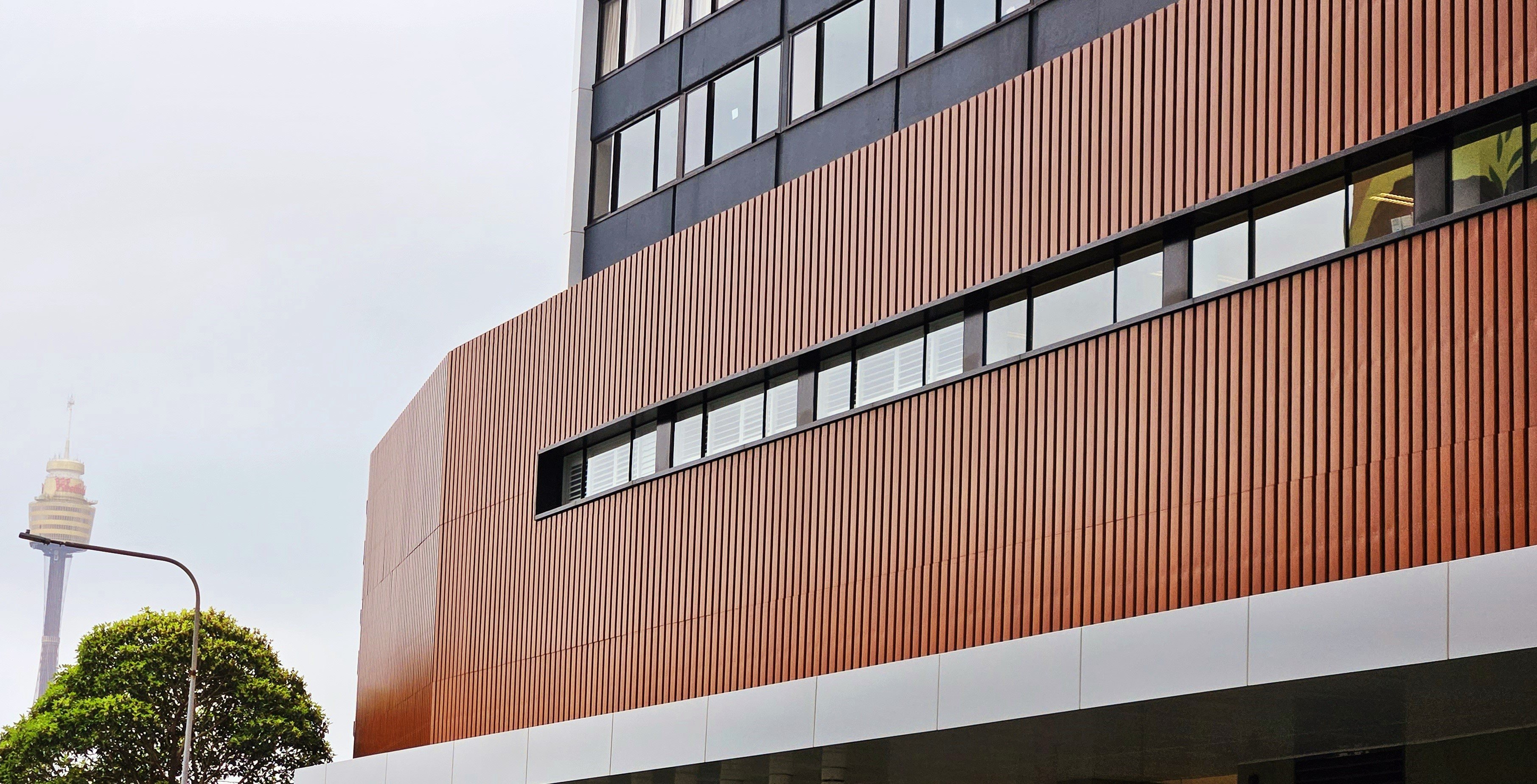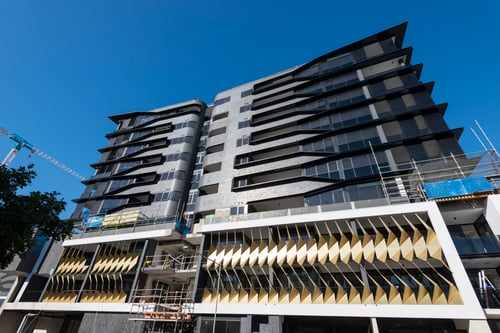Weatherproofing is a critical factor when it comes to choosing façade cladding materials. Water damage alone has contributed $1.4 billion to Australia’s defects over the past decade.
As improper waterproofing renders cladding non-compliant, meaning it will not be covered by Professional Indemnity Insurance, it is more critical than ever to choose the right cladding solution to prevent defects and subsequently to prevent a loss of time and money.
Aluminium cladding systems provide the ultimate weatherproofing solution to your façade design when finished and installed correctly, and compliant with Australian Standards such as AS4284.
The Weatherproofing Properties of Aluminium
With failed waterproofing being the most common defect nationally, it is important to consider not only the type of aluminium cladding used but the finish as well. Aluminium naturally reacts with air, creating a layer of aluminium oxide over the surface which protects it against further corrosion of the base material due to water damage. This can be enhanced with protective coatings, such as anodising, marine grade powder coating or PVDF finishes.
PVDF is recognised as the hardiest fluoropolymer-based resin available that has extreme resistance to UV, temperature cycling, salt spray and atmospheric fallout. Whereas anodising adds an even tougher aluminium oxide layer on the surface of the metal, keeping the aluminium beneath from being exposed to contaminants.
Waterproof Façade Design
To comply with Australian Standards and building insurance requirements, aluminium cladding must be installed in the correct manner to protect against moisture, leakages and degradation that can come from exposure to continuous rainfall or flooding. Weatherproof cladding must comply with AS 4284, the Australian Standard for performance, energy efficiency and minimal maintenance – however, this doesn’t ensure compliance. Referring to the AS4284 test report to make sure the detailing and pressures are relevant to the specific project you are working on is key.
Another element of water damage management is to utilise a rainscreen cladding system – this is where the cladding stands off from the water barrier to create a cavity that allows drainage and evaporation. By creating a system which rain cannot penetrate, but which also allows for water behind the cladding to drain away or dry due to airflow, rainscreens provide effective weather and waterproofing, improving the structural integrity of a building and offering a compliant façade for high rise and other buildings.
Airflow and Energy Efficiency with Ventilated Systems
Rainscreen cladded facades are not just to protect against rain. These versatile systems also double as ventilated facades – providing an air cavity to allow better air flow and more effective heating and cooling of the building. This makes buildings more resilient against both harsh heat and extreme cold, and reduces energy consumption, as the façade itself helps regulate the temperature of the building.
The Many Faces of Aluminium Cladding Systems
Aluminium façade cladding is a versatile cladding option that a comes in a variety of shapes, sizes and configurations to suit different requirements for installation. From extruded boards to flat panels, aluminium cladding can take on the visual requirements of almost any design, and when engineered correctly, can be installed in a way to provide efficient waterproofing for a building façade.
Engineered aluminium cladding: a classic favourite and superior alternative to aluminium composite panels
The aluminium panel façade look has long been a mainstay of multi-storey building design. A popular style, aluminium cassette panels create a stylish contemporary look, with the added benefit of being lightweight and quick and easy to install on high rise buildings. Engineered aluminium cladding combines aluminium skins with an aluminium profiled core and hardwearing PVDF finishes, which can be installed in a pre-made cassette system, creating a rainscreen system to reduce build-ups of moisture behind the system.
Create texture and depth with interlocking aluminium cladding
For unique, innovative designs and seamless installation, interlocking aluminium cladding can be installed horizontally, vertically or even diagonally. The concealed fixings and profile features such as steps, seams and recessed shadows provide added texture and depth to your facade. Using superior finishing, such as Ezy HD2 powder on powder finishes, brings unmatched weatherproofing capabilities. Plus, when installed as a rainscreen, interlocking aluminium cladding provides excellent moisture control and thermal regulation.
Optimal weather resistance with solid aluminium cladding
An alternative to engineered aluminium panels with a similar aesthetic, solid aluminium cladding panels feature concealed fixings and are typically prefinished for design integrity and weather defence. Solid aluminium cladding is enduring, and when finished in hardwearing finishes such as PVDF paint it will protect the façade against the harshest of weather conditions.
Combine Weather Defence and Aesthetic Excellence with Fairview
When it comes to compliant and superior façades, Fairview’s range of aluminium cladding systems outperform other cladding products on the market. While not all aluminium cladding products or systems on the market have been tested to AS 4284, Fairview’s range have all undergone extensive testing and deemed compliant, with their engineered panel Vitracore G2 outperforming all other aluminium cladding products on the market for both water pressure and air pressure tests. All systems also meet requirements for Professional Indemnity Insurance, so builders and specifiers can rest assured they can construct a façade without financial or permission issues.
Fairview’s aluminium cladding systems can be used as an effective rainscreen system when installed correctly. With the right installation, featuring an opening at the top and bottom of the system for airflow, they can provide ventilation, as well as efficient moisture drainage, for a thermally efficient building resistant to weather damage.
Featuring an array of colours, finishes and styles, all Fairview’s aluminium cladding systems allow architects to achieve their design visions while adding protection against temperature, moisture and other weather conditions that may otherwise degrade a building over time.
-> Vitradual solid aluminium: supplied in both 3000 and 5000 series aluminium, for a powerful weatherproof façade system. The panels can be assembled in a popular cassette-style rainscreen for effective waterproofing.
-> Vitracore G2 engineered aluminium: non-combustible, CodeMark certified and NCC compliant façade system with unmatched performance across all weatherproof test results.
-> Stryüm interlocking aluminium: innovative and easy installation linear façade system with a huge range of superior finishes and can be installed as a rainscreen.
If you are specifying a cladding system for your project, consider choosing aluminium for its many functional and design benefits, and choose a prefinished cladding style that not only meets your aesthetic needs, but adds much-needed weatherproofing protection to your entire building.
Click here to request a sample of your preferred cladding option.



